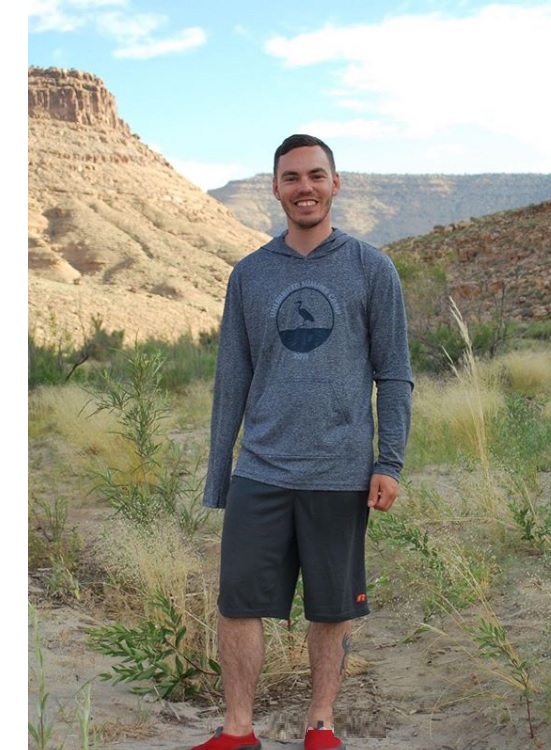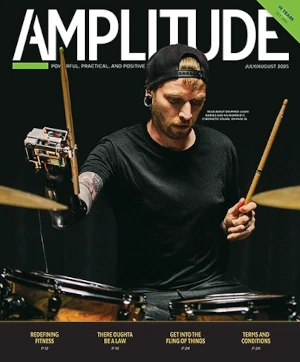Amplitude’s current issue explores the growing number of amputees who’ve turned to crowdfunding to cover the cost of their prosthetic devices. It’s a bigger trend than you might imagine. Type “prosthesis” into the search bar at GoFundMe, and you’ll get roughly 10,000 hits. The majority of those campaigns appear to be active—i.e., they’ve received at least one donation within the last 6 months. We found campaigns by amputees from 15 states and one Canadian province within our first two dozen results, so this is clearly a widespread strategy for making prosthetic devices affordable.
Our print article includes some crowdfunding tips from Jazmine Otero, who raised roughly $8,000 toward the cost of a new prosthetic leg in 2018. We asked two other effective crowdfunders (both of whom are running active campaigns) for the secrets to their success, which we’ve shared below. While we were at it, we dug up some information about the tax implications of crowdfunding. If you’re hoping to raise substantial sums of cash on GoFundMe, here’s what you should know in advance.
Richard Lucas Slusher
Campaign page: https://www.gofundme.com/f/please-help-me-fund-a-bionic-hero-arm
Goal: $17,000
Amount raised as of 11/10/2020: $10,610
Number of donors as of 11/10/2020: 160

Born with a congenital upper-limb difference, Slusher launched a GoFundMe campaign on October 19 to raise money for a Hero Arm from Open Bionics. Within the first few hours he’d amassed more than $2,000, and he reached the $10,000 plateau by the end of his second week. “I didn’t think it would do that well right out of the gate,” he says. “I’m humbled by it.”
A first-time crowdfunder, Slusher shared these tips with us:
1. Work collaboratively with your prosthetist and/or the device manufacturer. After it became clear that Slusher’s insurer wouldn’t cover his Hero Arm, Open Bionics suggested crowdfunding. In addition to sharing some basic information about how to set up a GoFundMe account, the company connected Slusher with a videographer to help him create a short promotional clip (one of the practices our print article recommends). The videographer combined footage from an on-camera interview (conducted over Zoom, because of the pandemic) with some still photos that Slusher supplied and some stock footage of the Hero Arm in action. “It’s easier for people to empathize with what you’re trying to do when they can see it,” he says.
2. Build interest in your campaign before you launch. “I took a solid three to four weeks reaching out to everyone I thought might be an asset to my campaign,” says Slusher. He sent personal notes (not a mass mailing) to dozens of his Facebook friends, explaining his campaign to each individual and letting them know it would be launching soon. To people engaged, he provided updates on social media about the progress of his promo video. Once the edit was complete, he established a specific date and time for his campaign to go live, then posted a few teasers on Facebook in the days leading up to launch. When Slusher finally hit “publish” on his campaign, his audience was primed and ready. That might help explain how he was able to pile up donations so quickly.
3. Provide regular updates as you progress toward your goal. Slusher tries to post some information every day on at least one of his social media platforms (he’s active on Facebook, Twitter, Instagram and LinkedIn). “I try to keep the content focused on the campaign,” he says. For instance, he posted a photo of someone using a Hero Arm to slice some food, accompanied by an explanation of how his current prostheses aren’t nearly as safe for such tasks. “It’s a good way for people to learn a little more about my life as an amputee,” he says, “and to better understand why I need the arm.”
Allyson-Joan Archer (for Mitchell Archer)
Campaign page: https://www.gofundme.com/f/help-mitchell-walk-and-hug-again
Goal: $100,000
Amount raised as of 11/10/2020: $85,825
Number of donors as of 11/10/2020: 705

Mitchell, a 38-year-old father of two, lost both hands and both legs below the knee in April due to complications from acute sepsis (not COVID related). His sister, Allyson-Joan, launched the GoFundMe campaign to raise money for home modifications and advanced prostheses, including myoelectric upper-limb devices that will allow Mitchell to resume his career as a business analyst.
Allyson had used GoFundMe once previously, to support a college friend who’d made the U.S. National Rowing team, but the campaign for her brother is considerably larger and much more personal. Here are some of her reflections on how she’s been able to raise nearly six figures in donations for Mitchell.
1. Tell a relatable story. “In some sense it’s not even about the donation,” Allyson says. “It’s about the story. It’s about creating a point of connection with people.” In crafting her narrative of Mitchell’s experience, she focused on small personal details—his smile, his sense of humor, his devotion to his wife and kids, his generous spirit—that might remind people of someone they care about in their own life. “I wanted to ensure that everyone could really know who Mitchell is after reading about him,” she says.
2. Leverage existing networks. Allyson notes that if you can tap into each supporter’s connections, there’s a multiplier effect. “I’m always encouraging people to continue sharing,” she says. “It’s like six degrees of separation. A lot of people aren’t in a position to donate this year [because of COVID-related financial concerns], but they can still pass the story along to email lists they’re on, clubs they belong to, organizations they support, or their own friend networks. They’re getting the word out, and that really helps.” As a result, the campaign has spread far beyond the Archers’ own family and friends. Allyson estimates that roughly 300 of the donors so far (about 40 percent) are complete strangers.
3. Establish trust. Before setting a goal for the campaign, the family sketched out a budget to determine what costs they could cover on their own, and how much they’d need to raise to fill in the gaps. “People want to know that their donation is meeting a need and making a difference,” says Allyson. A matter-of-fact accounting can reassure potential supporters that their money will be used for essential purposes. Along the same lines, she chose GoFundMe over other crowdfunding platforms because its name recognition and track record create a built-in trust factor. “They’re very diligent about fraud,” she notes—and for that reason, she recommends that you review the site’s policies and thoroughly prepare your documentation before you set up your account. “You have to be really careful,” Allyson says. “You have to lay out your information very clearly and establish that you really are who you say you are.”
How to Ensure You’re Not Taxed
Disclaimer: We’re not accountants, so the guidance we’re offering here is intended solely for informational purposes. If you pursue crowdfunding, you should consult with a tax professional to ensure you stay on the IRS’s good side.
According to The Balance (a personal finance website), the key tax principle governing crowdfunded revenues is that “donations are only taxable income if donors receive something in exchange for their donation, such as a service or product. If not, they’re non-taxable gifts.” The exact language from the Department of Treasury defines “gifts” as follows: “A gift proceeds from a ‘detached and disinterested generosity,’ and is made ‘out of affection, respect, admiration, charity or like impulses.'”
That definition applies to the vast majority of amputee crowdfunding campaigns. But it’s important to know it and abide by it. If you’re tempted to thank donors by offering t-shirts, gift cards, baked goods or anything else, that might change the equation. And by all means don’t try to attract potential supporters by offering rewards. The IRS won’t care whether you’re attempting to market your campaign or simply acting out of sincere gratitude. They’ll be coming for their cut if there’s any quid pro quo.
One other thing you should know is that GoFundMe has to report some campaigns’ revenues to the IRS. If your fundraising exceeds $20,000 in a given year and/or you receive more than 200 individual contributions, GoFundMe files a Form 1099-K with the IRS and sends you a copy. In the two examples above, Richard Slusher’s campaign is currently not subject to 1099-K reporting because it falls below both thresholds (fewer than 200 donors, less than $20,000). Allyson-Joan Archer’s campaign exceeds both thresholds, so she should plan to add a 1099-K to her tax-planning folder.
If you do receive a 1099-K, don’t freak out: It’s just an accounting instrument. As long as all the funds meet Treasury’s definition of non-taxable gifts, you’re not on the hook for any taxes no matter how large the amount on your 1099-K.
Three tax takeaways before you set up your crowdfunding campaign:
1) Talk to a professional before you start
2) Keep detailed records of every penny you receive
3) Keep detailed records of how you spend the funds




